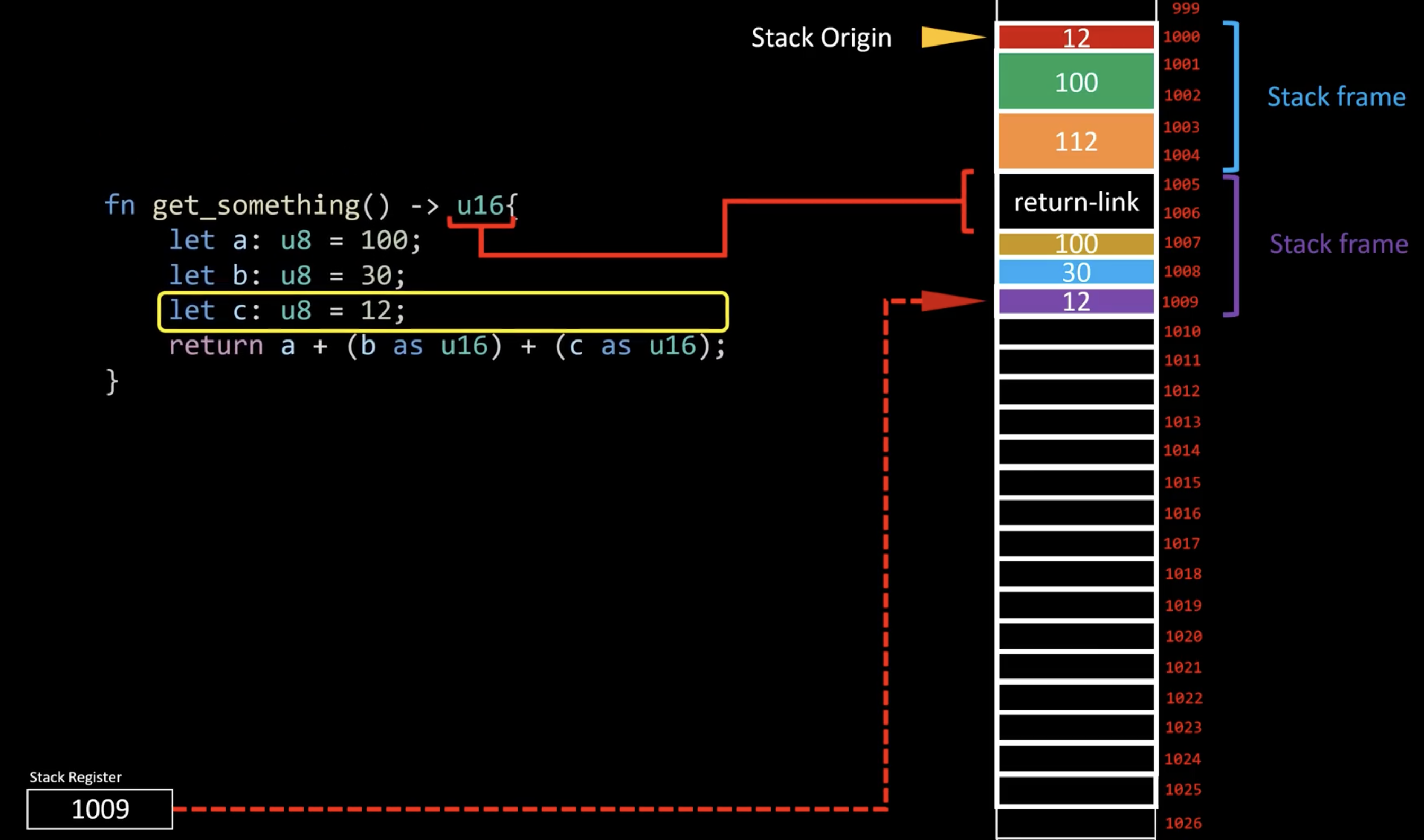A range of memory that the operating system has pre-allocated for the program. If a program modifies memory of another program’s allocated memory, this is a Segmentation Fault and the program is killed by the OS.
Properties, Pros and Cons
| Properties | Implication |
|---|---|
| Data is added and removed using a stack data structure | 🚫 Single-threaded. Cannot share memory between concurrent executions |
| Data is stored in a compact fashion | ✅ Saves space, by avoiding memory fragmentation ✅ Improved performance with caches1 |
| Variable sizes need to be known ahead of time | Is needed for handling the return value of function calls and local data ✅ Fast allocation times 🚫 No dynamic-type sizes are allowed |
| Size is pre-allocated and fixed2 | 🚫 Stack overflow may occur with large data or heavy recursion |
Iterative vs Recursive Solutions
Stacks are vulnerable to overflowing with recursive solutions if:
- there is no base case (infinite recursion)
- it takes too many stacks to end the recursion3
Stack size determination
This is usually determined by the operating system with a default value, but it can be configured during compilation time.
Terminology

| Terminology | Description |
|---|---|
| Stack origin | Pointer to the starting address of a program’s stack |
| Stack frames | A concept which allows programs to group data in memory based on the execution context |
| Stack pointer | A pointer to the end of occupied memory in a program’s stack |
| Stack register | A modern hardware feature to quickly keep track of a stack pointer’s value. This allows for much faster execution than storing the pointer in memory. |
| Return links | A pre-allocated memory address in the stack for the return value of a function call. This is why functions need to have known, fixed-length return types. |
Footnotes
-
this is because caches are a range in memory. The more things are stored within that range, the more likely for a cache hit to occur ↩
-
In most programming languages ↩
-
an exception to this is an optimization known as end-tail recursion. ↩